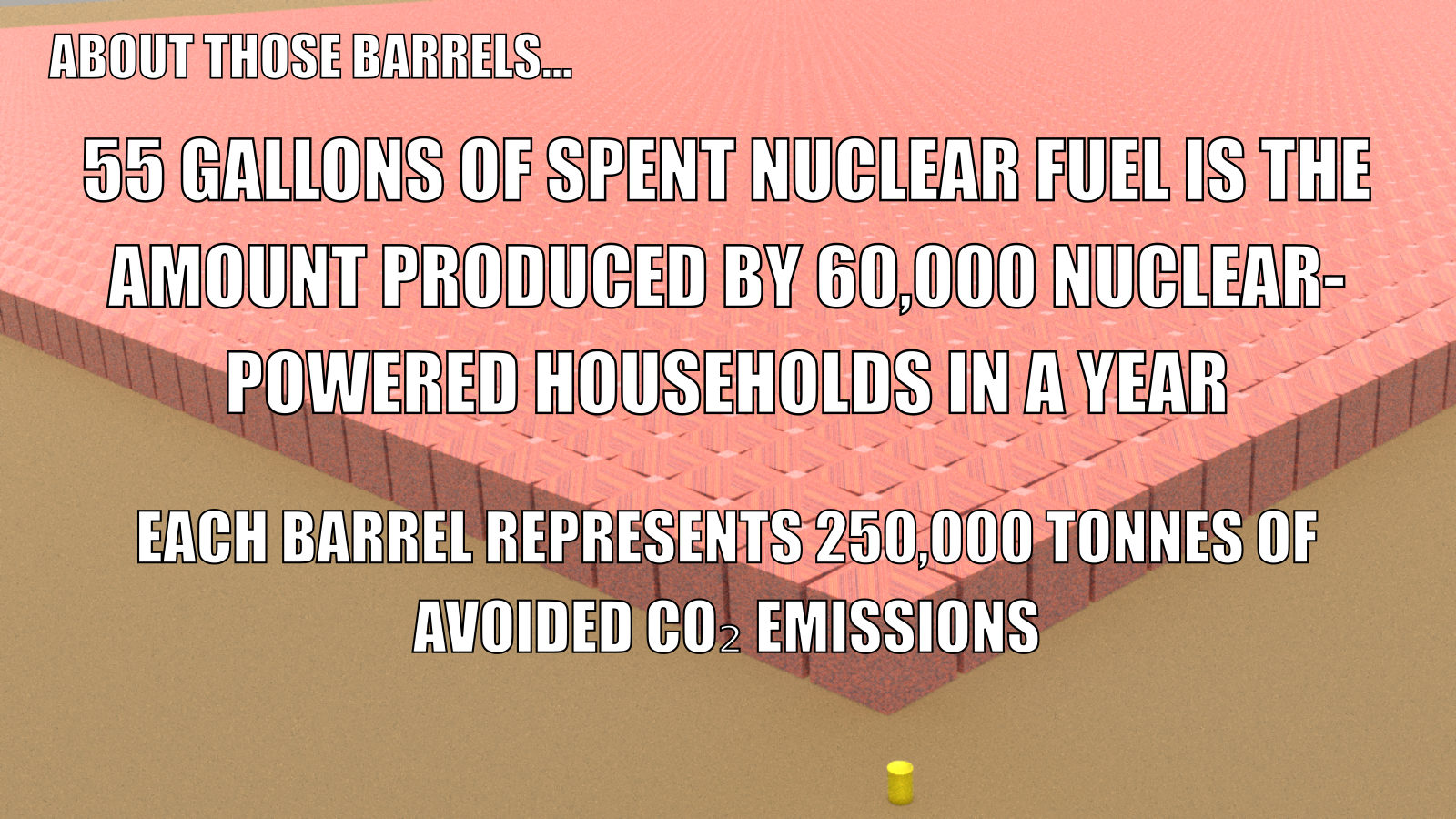How many households would generate one 55-gallon drum of nuclear waste?
By Dr. Nick Touran, Ph.D., P.E., 2023-04-29 , Reading time: 2 minutes
Greenpeace and other anti-nuclear organizations own a number of 55-gallon yellow barrels that they often display in city centers to stage sharable anti-nuclear information. The spent nuclear fuel they talk about is not stored in such barrels, it’s stored in dry casks. However, they do raise an interesting hypothetical question! If we actually did have a 55-gallon barrel filled to the brim with modern spent nuclear fuel, how much energy would that have provided? How much CO₂ would it have avoided?
In 2022, an average US household used 11,000 kWh [EIA]. Using this, plus the same baseline references for normal reactor waste characteristics as in our related calc, we find:
units -1 --verbose "55 gallons*(10g/cm^3) * 238/(238+32) * 46.4 MW*day/kg * 0.323 / (11000 kW*hour)"
60010.614
60,000 average USA nuclear-powered households generate 55 gallons of spent fuel per year.
How much carbon savings is that over fossil energy sources?
Avg intensity in USA is 0.855 pounds of CO2 emissions per kWh [EIA]. So that’s 387 grams, vs. 12 from nuclear, using lifecycle emissions numbers from Schlomer 2014. So total carbon savings per barrel is:
units -1 --verbose --digits 2 "55 gallons*(10g/cm^3) * 46.4 MW*day/kg * 238/(238+32) * 0.323 * (387g-12g)/(kW*hour)" "million lbs"
55 gallons*(10g/cm^3) * 46.4 MW*day/kg * 238/(238+32) * 0.323 * (387g-12g)/(kW*hour) = 550 million lbs
Each 55-gallon barrel of spent fuel represents 550 million lbs (250,000 tonnes) of carbon savings over the US average emissions.
Incidentally, the US’s per-capita all-sector electricity usage is nearly identical to the residential-sector per household usage, so these numbers also work for individual people.
This calculation is for non-breeder reactors. With breeder reactors, about 10x more energy would have been extracted per volume.
This page is a part of our Factlet collection.
